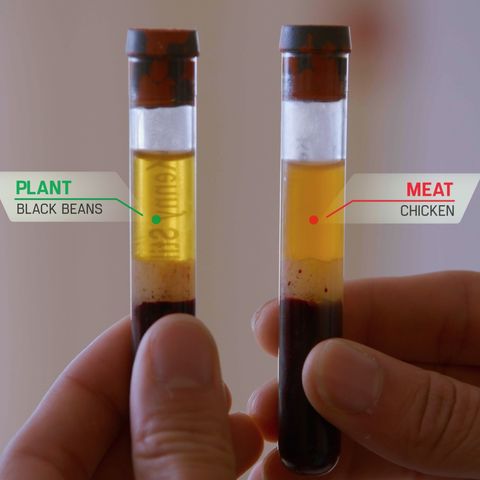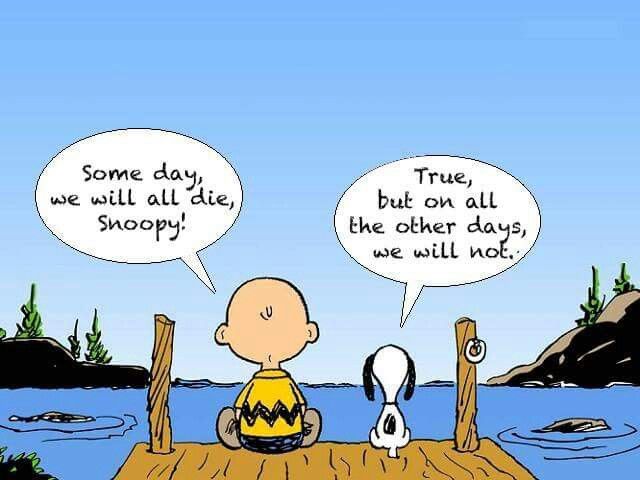
“Doesn’t Cloudy Blood Scare You?”
The Game Changers has done an incredibly good job at capitalizing on the fact that,
You Don’t Know, What You Don’t Know.
Before we go on, we need to agree on at least one fact,
We’re ALL a complete ignoramous when it comes to most things.
So before we start to think about why something is true, we should instead think about,
How much do I actually know about this subject?
What relevant information could they be leaving out?
Those are pretty much the basis for the scientific method.
So when you see a scene like this:

Immediately after hearing about vascular endothelium and vasodilation your lead to think that the cloudy blood is bad and negatively affects the endothelial lining, right?
At least that’s what I got from that scence.
But why didn’t they actually test and MEASURE the endothelial function following the meals that created the “clear” plant based and “cloudy” meat based blood?
Instead, The Game Changers just stuck the blood in a centrifuge, spun it up to sperate the constituents and viola!
Cloudy Blood = Bad Blood
But, Does cloudy blood matter?
First off, what causes this cloudy blood?
In short, fat, not protein.
More specifically, chylomicrons.
Chylomicrons:
“These are large triglyceride rich particles made by the intestine, which are involved in the transport of dietary triglycerides and cholesterol to peripheral tissues and liver. These particles contain apolipoproteins A-I, A-II, A-IV, A-V, B-48, C-II, C-III, and E. Apo B-48 is the core structural protein and each chylomicron particle contains one Apo B-48 molecule. The size of chylomicrons varies depending on the amount of fat ingested. A high fat meal leads to the formation of large chylomicron particles due to the increased amount of triglyceride being transported whereas in the fasting state the chylomicron particles are small carrying decreased quantities of triglyceride.” – Introduction to Lipids and Lipoproteins
Increased formation of chylomicrons in the blood due to the fat in a meal will make the blood look more cloudy.
Fat in the blood is bad right?
All the time?
Yes.
Very Bad.
If there is always high levels of fat in the blood it means your body is having an issue breaking down (oxidizing) and absorbing fats.
These are conditions like:
- Hyperlipidemia (high cholesterol)
- Chylomicronemia
But here’s the fun things kids, it’s 100% NORMAL to absorb fats (chylomicrons) from the diet into the blood.
You have to absorb fats into the blood to get them where they go to be utilized, or stored, in the body.
That’s how digestion works.
“Chylomicrons are secreted into the lymph and delivered via the thoracic duct to the circulation……. Activation of LPL by Apo C-II, carried on the chylomicrons, leads to the hydrolysis of the triglycerides that are carried in the chylomicrons resulting in the formation of free fatty acids, which can be taken up by the adjacent muscle cells and adipocytes for either energy production or storage”- Introduction to Lipids and Lipoproteins
Unless something with your digestion and/ or metabolism is broken you’ll METABOLIZE your cloudy blood fats just fine.
#KetoVegan
That’s the ENTIRE PREMISE of the previously most popular diet ketogenic diet.
Increasing fat in the diet to decrease the use of glucose as fuel and instead relying on fat (beta oxidation) and ketones.
But, a properly designed ketogenic diet (61% fat) doesn’t jack up your blood markers, even with the cloudy blood that comes with it.
“effects of a ketogenic diet on fasting and postprandial CVD biomarkers independent of weight loss. The results suggest that a short-term ketogenic diet does not have a deleterious effect on CVD risk profile and may improve the lipid disorders characteristic of atherogenic dyslipidemia.“- A ketogenic diet favorably affects serum biomarkers for cardiovascular disease in normal-weight men.
In fact, when compared to a low fat, high carbohydrate diets, the high fat or ketogenic diet, group, often IMPORVES blood lipid profiles.
“Carbohydrate-restricted diets, although relatively high in SFA, show effects on plasma fatty acid that are very different from those seen in studies conducted in the presence of moderate to high dietary carbohydrate. A high-carbohydrate diet prolongs circulatory exposure to dietary (or endogenous) SFA (saturated fatty acids), and conversely, dietary restriction of carbohydrate (via reduced secretion of insulin) allows for greater rates of lipid oxidation and management of the incoming lipid mix. High dietary fat is thus expected to be deleterious only if there is sufficient carbohydrate to provide the hormonal state in which the fat will be stored rather than oxidized“- Carbohydrate Restriction has a More Favorable Impact on the Metabolic Syndrome than a Low Fat Diet
Metabolism gets wonky when too many fats and carbs are consumed together, too often, and those constituents are not oxidized (burned).
In a person with a normally functioning metabolism, we can handle a olestra induced anal leakage event, boat load of fat through the day, as well as, in a single meal, with no long term ill effects.
“The exogenous lipoprotein pathway results in the efficient transfer of dietary fatty acids to muscle and adipose tissue for energy utilization and storage. The cholesterol is delivered to the liver where it can be utilized for the formation of VLDL, bile acids, or secreted back to the intestine via secretion into the bile. In normal individuals, this pathway can handle large amounts of fat (100 grams or more per day) without resulting in marked increases in plasma triglyceride levels. In fact, in a normal individual, a meal containing 75 grams of fat results in only a very modest increase in postprandial triglyceride levels.” –Introduction to Lipids and Lipoproteins
That’s right, the average person, with a properly functioning metabolism, can deal with up to 75 grams of fat, 675 calories from fat, IN A MEAL without a significant triglyceride disruption.
Wasn’t This Movie About Protein?
As I stated, the cloudiness of your blood has NOTHING to do with the protein source in the meal.
It has to do with the fat content of the meal and neither plant or animal based proteins disrupt your endothelial function.
Dairy?
No significant effects of consuming low-fat dairy products, compared with low-fat nondairy products, were observed for blood pressures, measures of vascular function, or lipid variables in the overall sample – Effects of low-fat dairy intake on blood pressure, endothelial function, and lipoprotein lipids in subjects with prehypertension or stage 1 hypertension
Beef?
There were no significant effects of the dietary treatments on diastolic blood pressure or endothelial function (as measured by peripheral arterial tonometry). A moderate protein DASH-like diet including lean beef decreased SBP in normotensive individuals. The inclusion of lean beef in a heart healthy diet also reduced peripheral vascular constriction. – Effects of a DASH-like diet containing lean beef on vascular health
The determinant(s) of the blood serum response (how cloudy your blood becomes) to a meal are:
- Meal size
- Meal composition
- Man vs Woman
- BMI (probably more specifically both total body mass and total muscle mass)
“In our sample of young volunteers, consumption of a mixed HFM (high fat meal) containing various sources of commonly consumed dietary fat did not result in different postprandial TG (tryglycerides) responses. Therefore, counter to our hypotheses, the results of this study do not support the notion that various sources of dietary fat result in markedly different PPL (postprandial) responses.“- Postprandial Lipemic Responses to Various Sources of Saturated and Monounsaturated Fat in Adults
The molecule is the molecule.
They’re it’s handled the same way, regardless of if that molecule comes from a plant or an animal.
It’s a Sham “Experiment”,Chicken vs Bean Burritos
“Chicken” tells you NOTHING about what part of the chicken, and how much chicken or anything else in the burrito for that matter.
Before we compare two burritos, we need to make sure the test(s) are apples to apples:
What were the macronutrient compositions of these burritos?
Were the carbs, fats and protein equated in the two?
Wouldn’t that be the actual SCIENCE experiment, since we’ve seen the food source doesn’t matter, but it’s instead the CONSTIUENTS OF THE MEAL.
If you were to measure the “cloudiness” of the blood samples postprandial (after eating) wouldn’t the meals need to be equated in macronutrients to accurately gauge what the effects of the protein source is having on the blood?
Alas, we’ll never know, The Game Changers didn’t disclose that information #gamechanged
It wouldn’t matter, that science has been done by real scientists,
“Isocaloric diets high in AP (animal protein) or PP (plant protein) allow similar improvements in metabolism and cardiovascular risk factors in people with T2DM, indicating that the differences in amino acid composition do not affect the metabolic responses to the interventions.” – Comparison of the effects of diets high in animal or plant protein on metabolic and cardiovascular markers in type 2 diabetes: A randomized clinical trial
i.e how cloudy your blood is after eating is a product of the nutrients in the meal, not the source of the protein.
Protein as Fuel
This is a complete strawman argument.
No one who knows ANYTHING about bioenergetics thinks this.
Literally, NOT A SINGLE PERSON.
To even put this out there, like its the common thinking, that somehow people think protein is fuel for exercise, is quite absurd.
I don’t really know how I could possibly try to be funny refute this argument, other than, if you did believe protein was for fuel you’re ignorant of the role of protein in the body.
No biggie if that’s the case.
Here’s the Roy Notes version of protein:
Protein is great for building things in the body.
Not such a great fuel, but can be used if need be.
But using protein as a primary fuel source is rather rare and in times of severe glycogen (muscle and liver sugar) depletion.
Sham Experiment #2 : The Boner Test
Here’s the long and short of this “experiement”.
Night 1:
3 College aged males eat a meat based burrito.
Go to sleep with Boner Measuring Machine (BMM) on penis that measures frequency, hardness and duration of boner.
Night 2:
Eat plant based burrito.
Wear same boner measurement machine.
Results:
Bean burritos lead to better boners.
Roughly 8% in hardness and 300-500% in the duration.
What does this very rigorous scientific experiment tell us?
Bean Burritos are like your man parts paid a visit to Oprah.

#IFLScience
“This is not a scientifically validated study, but the results that we’re seeing are very exciting” – Dr. Aaron Spitz
Wait, But What?
“NOT SCIENTIFICALLY VALIDATED”?
WTF, Doc?
Lets think about all the fun ways this is pretty meaningless:
1) Small sample size both in number of participants and meals/ nights.
All 3 had a big effect?
Yep, all 3 of them.
I don’t know about you, but I’m not changing anything I do based off the data of 3 people in a 2 data point test.
Yeah, I’m a unreasonable skeptic, what can I say?
2) No “break in” period for the boner machine.
I don’t know about you, but I’ve never gone to bed with a boner measurement machine on.
That’s just not my bag, baby.
Did their wangs just get used to the boner measurement machine (BMM) after the first night?
Did acclimation to the BMM change the outcome?
Or was it the burrito composition?
We’ll never know because….
3) No Crossover.
To give this little experiment a tiny bit of credence you need test the bean burrito boner effect hypothesis both ways.
The Burrito Boner “experiment” would need to be done in the reverse, AFTER a “washout” period.
Lets say 2 weeks later:
- No burritos, unless they chose to eat them, and whatever else, ie “free living” condition.
- No BMM (boner measurement machines).
- Bring the Bros back.
- Feed them a Bean Burrito the first night back, attach boner measurement machine and go to town.
- Feed them a Meat Burrito the second night, attach BMM (boner measurement machine) and have sweet, sweet, maybe boner filled (but who knows) dreams.
That way we would have some idea if the magic was in the burrito composition or acclimation to the boner machine.
4) No Control
There was no group of Bros who just ate whatever and wore the boner measurement machine.
What if they were pitching harder, longer, tents on night two also?
Well, we don’t know…
If so, that would be a pretty good argument for acclimation to the BMM.
We just know how it was portrayed in the movie made for a supposedly surprising scene.
But it was pretty silly really.
Let’s Cut to the Chase, Will I Die?
Yes,we all will.

Will Animal Meat Kill Me?
Probably not, at least no more so than having that all to0 common condition of being a human will eventually lead to your demise,
“our results suggest that United Kingdom–based vegetarians and comparable nonvegetarians (including people who eat fish but not meat and those who eat meat <5 times per week on average) have similar all-cause mortality.” – Mortality in vegetarians and comparable nonvegetarians in the United Kingdom
“our study has shown that Austrian adults who consume a vegetarian diet are less healthy (in terms of cancer, allergies, and mental health disorders), have a lower quality of life, and also require more medical treatment.” – Nutrition and Health – The Association between Eating Behavior and Various Health Parameters: A Matched Sample Study
“We found no evidence that following a vegetarian diet, semi-vegetarian diet or a pesco-vegetarian diet has an independent protective effect on all-cause mortality.“- Vegetarian diet and all-cause mortality: Evidence from a large population-based Australian cohort – the 45 and Up Study
“the overall cancer incidence and mortality from ischemic heart disease were significantly lower, but there were no associations of a vegetarian diet with all-cause mortality and mortality from circulatory and cerebrovascular diseases.” – Cardiovascular Disease Mortality and Cancer Incidence in Vegetarians: A Meta-Analysis and Systematic Review
Why The Confusion?
Epidemiological research and dogma.
The VAST majority of research on this topic, like all long term studies in nutrition, was done by recall survey over time.
And with recall surveys you run into all the typical problems.
People misremember, they don’t understand quantities/ measurements/ serving sizes, habits change, they outright lie.
You just can’t show cause and effect no matter how many times the same pattern emerges in epidemiological research…
“Over the past 60 years, epidemiologists published tens of thousands of reports asserting that dietary intake was a major contributing factor to chronic non-communicable diseases despite the fact that epidemiologic methods do not measure dietary intake. In lieu of measuring actual dietary intake, epidemiologists collected millions of unverified verbal and textual reports of memories of perceptions of dietary intake. Given that actual dietary intake and reported memories of perceptions of intake are not in the same ontological category, epidemiologists committed the logical fallacy of “Misplaced Concreteness.” This error was exacerbated when the anecdotal (self-reported) data were impermissibly transformed (i.e., pseudo-quantified) into proxy-estimates of nutrient and caloric consumption via the assignment of “reference” values from databases of questionable validity and comprehensiveness. These errors were further compounded when statistical analyses of diet-disease relations were performed using the pseudo-quantified anecdotal data. These fatal measurement, analytic, and inferential flaws were obscured when epidemiologists failed to cite decades of research demonstrating that the proxy-estimates they created were often physiologically implausible (i.e., meaningless) and had no verifiable quantitative relation to the actual nutrient or caloric consumption of participants.” – The Failure to Measure Dietary Intake Engendered a Fictional Discourse on Diet-Disease Relations.
These studies showed correlation, not causation.
People who were eating reporting high amounts of animal meat intake also tended to cluster other “unhealthy behaviors”,
“the “unhealthy” DP (“meat dietary pattern”) is independently associated with younger age, lower years of education, male sex, unemployment, part-time employment and domestic working. Furthermore, individuals from Azores and Madeira were more likely to report this kind of DP, given their high frequency of consumption of meat. Regarding lifestyle behaviors, smoking and being physically inactive were significantly and independently associated with having this type of DP.” – Dietary Patterns Characterized by High Meat Consumption Are Associated with Other Unhealthy Life Styles and Depression Symptoms
When Comparing Vegetarians to “Health Seeking” Omnivores?
Looking at health seeking omnivores, people who eat meat and plants, exercise, don’t smoke or drink excessively and are not overweight, the outcomes are pretty much the same,
“Plant protein was associated with lower all-cause mortality (HR, 0.90 per 3% energy increment; 95% CI, 0.86-0.95; P for trend < .001) and cardiovascular mortality (HR, 0.88 per 3% energy increment; 95% CI, 0.80-0.97; P for trend = .007). These associations were confined to participants with at least 1 unhealthy lifestyle factor based on smoking, heavy alcohol intake, overweight or obesity, and physical inactivity, but not evident among those without any of these risk factors. Replacing animal protein of various origins with plant protein was associated with lower mortality.” – Association of Animal and Plant Protein Intake With All-Cause and Cause-Specific Mortality
“Overall mortality is similar for vegetarians and comparable non-vegetarians, but vegetarian groups compare favourably with the general population. The long-term health of vegetarians appears to be generally good, and for some diseases and medical conditions it may be better than that of comparable omnivores.” – The long-term health of vegetarians and vegans.
So, you’re telling me, all things being equal, vegan, vegetarian and omnivorous diets of HIGH QUALITY, NUTRIENT DENSE, FOOD amongst health seeking individuals are probably pretty much a wash?
Yes,
“The health benefits of vegetarian diets are not unique. Prudent plant-based dietary patterns which also allow small intakes of red meat, fish and dairy products have demonstrated significant improvements in health status as well. At this time an optimal dietary intake for health status is unknown. Plant-based diets contain a host of food and nutrients known to have independent health benefits. While vegetarian diets have not shown any adverse effects on health, restrictive and monotonous vegetarian diets may result in nutrient deficiencies with deleterious effects on health.” – Vegetarian diets, low-meat diets and health: a review.
Propaganda Doesn’t Help
Since The Game Changers came out, when asked about it, I’ve oscliated between,
“I don’t care, its trash”
and
“I’m as MAD as HELL, and I’m NOT GOING TO TAKE THIS ANYMORE.”
And I’ve settled on response #2 being the default for the time being.
Why?
Because LOTS of people are watching this and buying into this nonsense.
Mostly because of the names attached (appeal to celebrity), the MD’s included (appeal to authority) and the slick editing and false dichotomies used.
It’s 100% NOT because the viewer is stupid.
You Only Know Everything You’ve Learned
So when The Game Changers alludes to things like animal X, Y, Z eats grass and they’re so huge, so humans can do the same
Or protein consumption depletes glycogen (I still don’t even understand the biological basis for that one)…
Or a peanut butter sandwich has as much protein as a steak (like you can’t do simple math and figure out that’s a BIG ASS SANDWICH.)
And follow it up with an MD telling you all the benefits of a “Plant Based” lifestyle (without actually addressing the point at hand)
#1: It’s dishonest
#2: Someone who doesn’t know much nutritional science, would probably make a false connection, and not smell the bullshit.
And that’s what The Game Changers is….
The Definition of bullshit Propaganda and DOES NOTHING TO HELP MOVE ANY DISSCUSSION ABOUT NUTRITION FORWARD.
If we can’t agree on the very basics of biology like,plant protein isn’t as bioavailable as animal protein, and humans aren’t ruminant animals.
We can’t have a serious conversation. #alternativefacts
What The Game Changers Could/ Should Have Done
The film could have shown that you can 100% perform at the highest level in athletics using a vegan or vegetarian diet.
But it’s harder to construct and meet your nutritional needs, as a vegan athlete .
The Game Changers could have shown you how to construct said “Plant Based” diet, where the holes are and how to successfully fill them.
The film could have gone into why having a plant heavy diet is typically INCREDIBLY healthy from a number of standpoints like:
- Fiber intake
- Vitamins
- Minerals
- Phytochemicals
- Calorie and weight management.
For Optimal Health, People Should Eat a Large Quantity and Variety of Plants
Daily, if possible.
There is NO DOUBT that plants are generally good for you.
But that’s not the argument of The Game Changers.
Instead The Game Changers decided to try and scare you into believing there’s magic food out there.
There is NO Magic Food.
Believe me, I wish there was.


